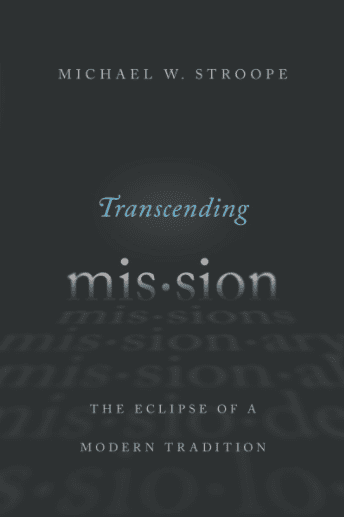AA, Sacraments and Ecclesiology (by T)
This is the third post in our series looking at what the Church can learn from AA and 12 step groups generally. The first post looked at how appropriate the 12 steps are as a response to the King Jesus Gospel. The second post discussed how 12 step groups pursue spiritual (trans)formation via a communally grounded and supported discipleship process. I mention (and link to) the past posts for a couple of reasons. One is that it was a wise recommendation from a long time Jesus Creed friend, the Abbess, to allow folks who come in midway to see the whole thread. The second is that I want to tip my hand to a larger goal for this series, and invite people to look back in that light. I obviously think that 12 step groups have a lot to offer the Church.
But more than that, I have come to believe that 12 step groups not only have wisdom to offer the Church, I believe that 12 step groups have much to offer the Church, especially the evangelical branch, in some of her greatest areas of weakness. So, this series will not only to discuss strengths of 12 step groups, but allege and discuss corresponding areas of weakness of the modern American Evangelical Church, and whether a shift toward 12 step practices and/or thinking would be helpful for the Church to consider. Even the first two posts are comments in that vein.
Speaking as an evangelical, our evangelism and the responses they generate are almost always geared, not around a King Jesus gospel, but a soterian gospel (post one). And, as Dallas Willard and others have noted, our central practices are not especially well designed to achieve and sustain spiritual (trans)formation resulting in Christ-likeness and obedience to Jesus’ commands (post two).
Have you thought about what activities your church prioritizes and why (its priority of sacraments)? Are there communal practices that we ought to respect and value more or less than we do? What impact would that have on our applied ecclesiology? What if relational discipleship was the central sacrament? What about the Lord’s Supper? What about honesty/confession? Can one have “church” based on a re-ordered, but still biblical, set of sacramental practices? Which would you like to see given greater priority and how would that be applied? Is this an area where the Church should be more like AA? Why or why not?
Today, I want to look at a few areas that seem closely related. Specifically, I want to look at (i) multiplication and growth of groups, (ii) the pros and cons of institutionally leveraging charismatic leaders, and (iii) which practices we believe God is most active in. In a nutshell, we’re looking at applied ecclesiology and the sacramental theology driving it.
First a bit more about my own experience on this front. I’m working right now, for the third time in my life, as a key leader in a church plant. I do not have a seminary degree, although I have been a student of church planting over the last 15 years, attending various conferences and trainings, reading multiple books, and then learning a bit from trial and error. It’s on that basis and my lifetime as a member in various evangelical churches that I make the following generalization:
Evangelical churches and pastors are expected to leverage the personality and charisma of the lead pastor, especially in preaching, to: (i) provide the organizational culture, priorities, and internal “glue” for the whole local body, and (ii) fuel the growth of the church through attraction of new members. If you are looking for the sacramental center of an evangelical church, look to the pulpit and the man behind it.
At the level of the congregation, this is often more implicit than explicit. For pastors and church planters in training, this is often explicitly taught. There are many “pros” to this approach, though many would dispute their value. Preaching well (accurately, passionately, persuasively, attractively, succinctly, etc.) is not a talent/skill that many possess. By leveraging the lead pastor who preaches well, churches can achieve clarity and consistency of their message, which is helpful not only in attracting new comers, but also in effectively organizing the culture and work of the rest of the church.
Further, leveraging the lead pastor’s charisma is extremely efficient in the days of modern technology. It can take years if not decades to effectively reproduce another seasoned lead pastor with comparable skill and charisma, and success is not at all guaranteed. By contrast, it takes nominal time and only slightly more money to replicate and/or magnify the reach of the already proven figurehead via basic communication and video technologies. Perhaps most significantly, if the primary mission of the Church is to win converts to a soterian gospel, the ability to leverage a charismatic speaker is an extremely powerful tool in that mission. Perhaps more pragmatically, to whatever extent that the three b’s (bodies, buildings, and bucks) inform the metric for church success, then, leveraging the charismatic leader is ideal. More can be said, but that will have to suffice for this forum.
In fact, in the interest of brevity, I will only mention a few of the possible “cons” of this approach, which are also disputed by many: (i) sermons/lectures, especially when dominated by one person, as a centerpiece communal practice, are not likely to lead to significant learning and retention, let alone transformation towards Christlikeness and the production of peers equal to the teacher; (ii) problems of succession, especially after a moral failure of the leader, threaten not only the growth, but even the survival of the local body that is built on the leader’s personality; (iii) growth that comes via leveraging the charisma of one tends to be in terms of addition rather than multiplication (members who are added still rely heavily, if not exclusively, on the lead pastor to produce future growth); (iv) the process of leveraging/elevating a personality generally isolates the leader from the community he or she serves; becoming the face of the whole body does not permit the individual leader to express a variety of their personal issues or difficulties; (iv) as the centerpiece activity of the church, it trains the congregation to be passive; and, finally (v) the responsibility of being the face of a church is often too much for any one person (or family) to carry in the short or long term, even for one who meets the expectations of performance.
By contrast, although AA benefitted greatly in their early years from the personal charisma and leadership of Bill W. and other “old timers,” AA survived, and enjoyed international growth, arguably due in large part to the commitment to organizational structures of extremely low altitude and equality among members. The push to specifically keep both the central missional work and institutional power and responsibility with the rank and file members and push it away from the charismatic leaders, both present and future, was a conscious choice of AA (including Bill W.), and met with not a little resistance, even though egalitarianism had been part of the DNA from the beginning.
The non-hierarchical organization of AA is now embodied chiefly in what AA calls its 12 traditions, which operates as a kind of constitution for the many groups. Reviewing all of the traditions is beyond this venue, but I do want to highlight the 12th, and encourage people who have never read the traditions to begin by reading that one (included below). I used to think that anonymity was something AA’s practiced solely out of a desire to prevent being identified as an alcoholic or preventing one member from outing another. I was very wrong. The 12th tradition is foundational to the culture and ecclesiology of AA and they put it like this: “Anonymity is the spiritual foundation of all our traditions, ever reminding us to place principles above personalities. . . [W]e of Alcoholics Anonymous believe that the principle of anonymity has an immense spiritual significance. It reminds us that . . . we are actually to practice a genuine humility. This to the end that our great blessings may never spoil us; that we shall forever live in thankful contemplation of Him who presides over us all.”
The other traditions make it clear that, at the group level, this is applied so that no one person or even set of persons is given any institutional power in AA groups; persuasive authority is all anyone has, except for matters that threaten AA as whole. Any recovering alcoholic may start a new group, and is encouraged to do so, especially when and where there are no groups available to help the alcoholic still dominated by alcohol.
I think it is worth noting at this point that, as mentioned in our last post, new comers to 12 step groups are often encouraged to attend 90 meetings in 90 days. Think about that growth: AA was founded less than a century ago and today there enough groups in every major US city (and in many cities around the world) that attending 90 meetings in 90 days is actually possible. Moreover, these groups were started, not by professional AA “planters” or by people with any formal training to start these groups. The groups were founded by addicts who needed or wanted a new group, often no doubt, with a mix of selfish (or even resentful) and selfless motives. But these groups now cover the globe. All members are equal. All are addicts. All are witnesses. They readily admit that anything beyond persuasive authority over others (and even that sometimes) tends to give them a big head and threaten their sobriety. They have no professional AA’s; all are the congregation and all are missionaries (see step 12). They have no institutional authority other than the 12 traditions. Even sponsors are chosen (or “fired”) by the sponsored.
Many in the Church lament the tendency to practice “sola pastora,” but fewer think it is possible to initiate and maintain growth without leveraging the power of a charismatic leader, even if attempts are made to limit the institutional power of that person. If nothing else, I think AA demonstrably proves that it is more than possible to grow—deep and wide—in another way. But growth alone may be unpersuasive for many. I have often wondered through the church plants I’ve been a part of, what makes a meeting “church” for the typical evangelical? I have come to believe that evangelicals, like their Catholic counterparts, do have a theology of sacraments (activities in which God is especially active) and an ecclesiology, and they are related in such a way that if the evangelical sacraments are practiced well in a meeting, then we had “church.”
For the evangelical, I think the chief of those practices is the sermon in the tradition of American preachers. Singing is valued in some camps even above preaching, but for many, there is no “church” without the preaching, often of an ordained preacher. This is the central evangelical sacrament and it is thereby central to evangelical ecclesiology. “Faith comes by hearing, and that by the word of God.”
Is there another way? Is there another practice or set of practices that we could believe God to be as or more active in than American-style preaching? One of the comments I’ve heard many times from Christians who, though growing up in church, went to a 12 step group for an addiction issue, is “God works in ways I had never imagined.” Indeed, AA also has a theology of sacraments that are key to its ecclesiology. One of the core sacraments in AA is the practice of honesty. Indeed, chapter 5 of AA’s “Big Book” is titled “How It Works” and begins with these lines: “Rarely have we seen a person fail who has thoroughly followed our path. Those who do not recover are people who cannot or will not completely give themselves to this simple program, usually men and women who are constitutionally incapable of being honest with themselves. There are such unfortunates. They are not at fault; they seem to have been born that way. They are naturally incapable of grasping and developing a manner of living which demands rigorous honesty.”
AA’s don’t use the term sacrament (but neither do evangelicals, really), but they believe that God is especially active in the midst of rigorous honesty, especially about one’s failures, addictions, and wrongs. The meetings are set up to encourage and allow all the members, therefore, to practice this honesty themselves and make it a way of life. They have to discover, personally, that the truth won’t kill them, but will actually set them free. They have to confess their sins so they can be whole and healed.
More could be said of other “sacraments” in AA, but this is enough for discussion.











